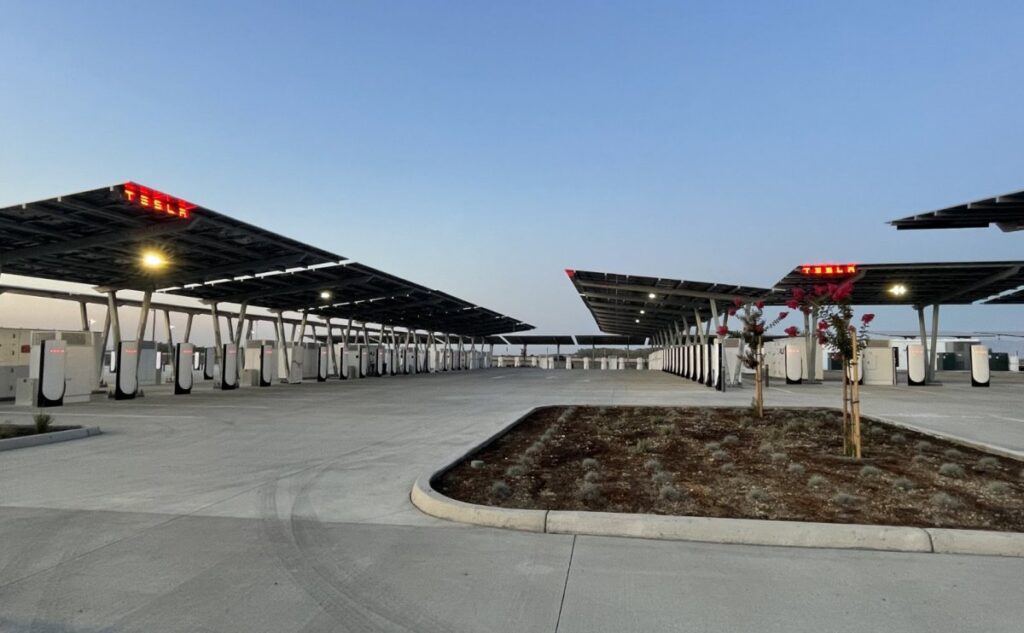World’s Largest Tesla Supercharger: 168 Stalls, 100% Off-Grid, Powered by Sun and Battery Storage
Within just 8 months, Tesla has successfully completed its most ambitious Supercharger project to date – Project Oasis, the world’s largest Supercharger site located in Lost Hills, California. The site is partially open to customers for its first phase, boasting 84 stalls out of the eventual 168 stalls, all powered by 11 MW of solar power and 10 Megapacks of battery storage.
What sets this Supercharger apart is not only its impressive construction speed but also its self-sufficient and off-grid operation. Unlike traditional charging stations that rely on local utilities, Project Oasis generates its own clean electricity from solar panels and stores it for use, making it highly resilient even during power outages or blackouts.
Self-Sufficient Energy Oasis
The first 84 stalls at Lost Hills are already operational, solely powered by the sun and operating off-grid. This innovative approach marks a new era in Supercharger infrastructure, providing a reliable and sustainable charging solution for Tesla owners.
With the ability to utilize the Cybertruck’s Powershare feature, owners can even use the Supercharger as a backup power source for their homes during emergencies, showcasing true independence and self-reliance.
The Future of Charging
Tesla’s vision for the future of charging revolves around solar-powered Superchargers that reduce strain on electrical grids and promote a fully sustainable ecosystem. By harnessing solar energy and storing it for on-demand vehicle charging, Tesla is paving the way for a cleaner and more efficient charging experience.
Largest Supercharger in the World
While the current 84 stalls are just the beginning, Tesla plans to expand the site to accommodate all 168 stalls and introduce a new on-site lounge later this year. Once completed, Project Oasis will stand as the largest Supercharger site globally, showcasing not only Tesla’s rapid construction capabilities but also its commitment to self-sustainability.
As we look towards the future, we anticipate more large-scale, self-sufficient Supercharger sites to emerge worldwide, revolutionizing the way we perceive electric vehicle charging infrastructure.

